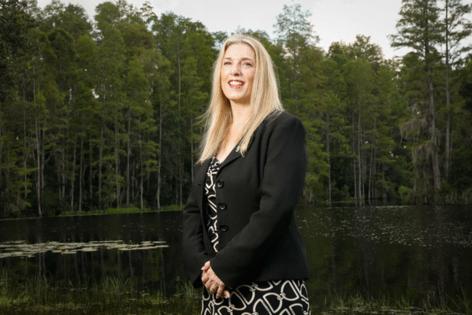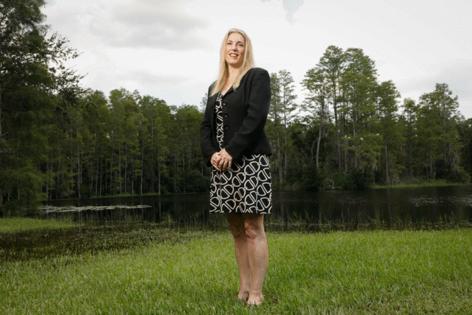Is our hurricane rating system outdated? A USF researcher suggests a change
Published in Weather News
TAMPA, Fla. — As Tropical Storm Debby grazed the Tampa Bay area last August, many Floridians treated it like any other summer rainstorm: Inflatable floats dotted Bayshore Boulevard, curious onlookers flocked to the beach and drivers plowed through pooling floodwaters.
But Debby’s ugly side soon appeared.
About a day after the storm passed, the Alafia River swelled to nearly 20 feet, its highest level in seven years. Homes in Lithia and Riverview were inundated with floodwater. All told, the storm claimed 17 lives in the U.S., strengthening to a Category 1 storm at its peak but never becoming a major hurricane.
Researchers point to Debby as just one recent example of what’s wrong with how tropical cyclone risk is communicated. Forecasters in Tampa Bay warned about possible flash flooding and up to five feet of surge for the coasts, but for the chiseled Floridians who pride themselves on their storm hardiness, one main thing mattered in their decision-making: Debby was just a tropical storm.
The National Hurricane Center classifies hurricanes using the 1970s-era Saffir-Simpson Scale, which uses only wind speed as its guiding variable. A Category 1 storm has wind speeds up to 95 mph, a Category 2 up to 110 mph, and so on.
But Jennifer Collins believes there is a better way.
In 2021, Collins, a hurricane researcher and professor at the University of South Florida’s School of Geosciences, joined a team from the Netherlands to answer an increasingly common question in scientific circles: How can we better inform the public of hurricane risks — and make them safer?
Their solution was to build a new hurricane classification scale entirely, one that also accounts for the threats of storm surge and rainfall.
The team’s so-called Tropical Cyclone Severity Scale works like this: Predicted windspeed from an encroaching storm is ranked on a scale 1 to 5. So is the forecasted surge height, and the rainfall. Those numbers are then combined to create an overall risk category.
Tropical Storm Debby, for instance, would only have a wind speed ranking of 1 on the scale. But the storm’s surge posed a higher threat, and would have been ranked a 2. The threat from Debby’s rainfall was higher still, and would be ranked a 3.
Put together under the new scale, Tropical Storm Debby would actually have been a Category 3 storm.
“So many times I’ve heard, ‘Well, if it’s a major hurricane, then I’ll start paying attention.’ And that concerns me,” Collins said. “I believe in this scale, and I really believe it has the potential to save lives.”
Three years after developing the new scale, Collins and her team now have data they say proves the public makes more informed decisions about their safety when using an approach that accounts for both rain and surge.
In a peer-reviewed study published this month in Scientific Reports, the researchers interviewed 4,000 people in states along the Gulf and Atlantic coasts, including Florida. Each person received 10 fictional forecasts. Half of those surveyed were given warnings from the current Saffir-Simpson model, and half received warnings from the new Tropical Cyclone Severity Scale.
They found that people who used the new system led to “substantially better identification of the main hazard” of a storm, and in turn, helped them make more tailored safety decisions like getting sandbags to fend off flooding or deciding whether to evacuate.
“Providing adequate information... is critical to encourage proper decision making,” the researchers wrote. “Without satisfactory and complete information, an individual is likely to miscalculate their personal risk or even potentially be moved to inaction.”
Collins argues that one benefit of the new scale is how it uses a category approach that the public already knows. But where the Saffir-Simpson ends at a Category 5, the new system can reach as high as a Category 6 to underscore the combined risks from multiple hazards.
An example: Hurricane Ian made landfall over Southwest Florida in September 2022 as a Category 4 storm under the Saffir-Simpson scale. Using the new method, Ian would’ve ranked as a 4 in the wind category, a 4 in rainfall and a 5 in surge. Overall, Ian would’ve been classified as a Category 6 storm, according to an analysis provided by the researchers.
Before the study was published, Brian LaMarre, the former meteorologist-in-charge for the National Weather Service in Ruskin, participated in a focus group on the new scale. He thinks it’s a good idea.
“Now, does the current scale need to be adjusted? I don’t think it needs to be thrown out,” LaMarre said. “But I think this tropical cyclone severity scale — it’s not proposing to throw it all out.”
Laura Myers, a senior research specialist and resilience director at the Center for Risk and Insurance Research at the University of Alabama, called the research behind the study “rigorous.”
The research showed how people would assess their personal risk based on the two different scales. She said she hadn’t seen a study like it before.
“I think the environment is very good and ripe for ideas like this, especially the fact that they’ve progressed far enough to really show how they can make a difference,” Myers said of the research.
Myers regularly speaks and collaborates with federal forecasters and meteorologists. She said they care deeply about how the public makes safety decisions, and that it takes a large body of research before they change their forecasting tools.
“I think everybody involved sees the need for something that really provides more information than the current Saffir- Simpson scale,” Myers said.
Myers said she believes that the public responds well to a simple, numerical scale that can showcase a storm’s severity and effects.
“That’s why the Saffir-Simpson has always been popular, even though it’s not including all those impacts — it’s a number people can hang their hat on,” Myers said.
The worry is that a person may make the wrong personal decision because the scale is based only on wind.
“If you give them a numerical scale that incorporates a few more impacts … it’ll get their attention, and they’ll make a better decision, because it may not be the wind, it may be the water."
--------------
©2025 Tampa Bay Times. Visit at tampabay.com. Distributed by Tribune Content Agency, LLC.










Comments